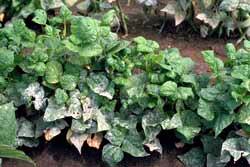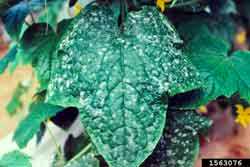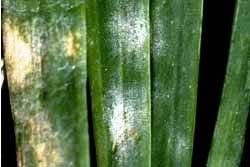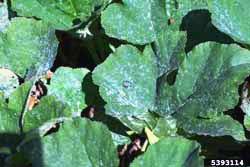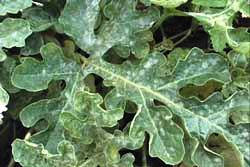Powdery Mildew of Vegetables
Powdery mildews are caused by a variety of fungi, each specific to a host plant. It is recognizable by the white to gray powdery fungal growth on leaves and vines. Commonly infected vegetables are beans, squash, cucumbers, melons, pumpkins, beets, lettuce, peppers, tomatoes and onions. Since different fungi infect specific plants, it is not possible to spread from one species to another, for example, powdery mildew on beans will not affect squash. Severely infected leaves gradually wither and die; this premature loss of foliage results in poor fruit quality and quantity.
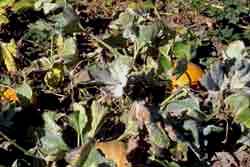
Severely affected leaves can become dry and brittle, and then wither and die, as shown on this pumpkin vine.
Click on images to view full-size
Identification and Control Information
- Integrated Pest Management for Home Gardeners: Powdery Mildew on Vegetables (PDF)—University of California
- Fact Sheet with Description and Control Options—University of Rhode Island Landscape Horticulture Program
More Information
- An Online Guide to Plant Disease Control—Oregon State University Extension
- Disease Prevention in Home Vegetable Gardens (PDF)—University of Missouri Extension
- Controlling Diseases in the Home Vegetable Garden (PDF)—University of Illinois Extension
[Photos, left to right: Howard F. Schwartz, Colorado State University, Bugwood.org; Charles Averre, North Carolina State University, Bugwood.org; S. K. Mohan, Bugwood.org; Howard F. Schwartz, Colorado State University, Bugwood.org; Howard F. Schwartz, Colorado State University, Bugwood.org; David B. Langston, University of Georgia, Bugwood.org]
